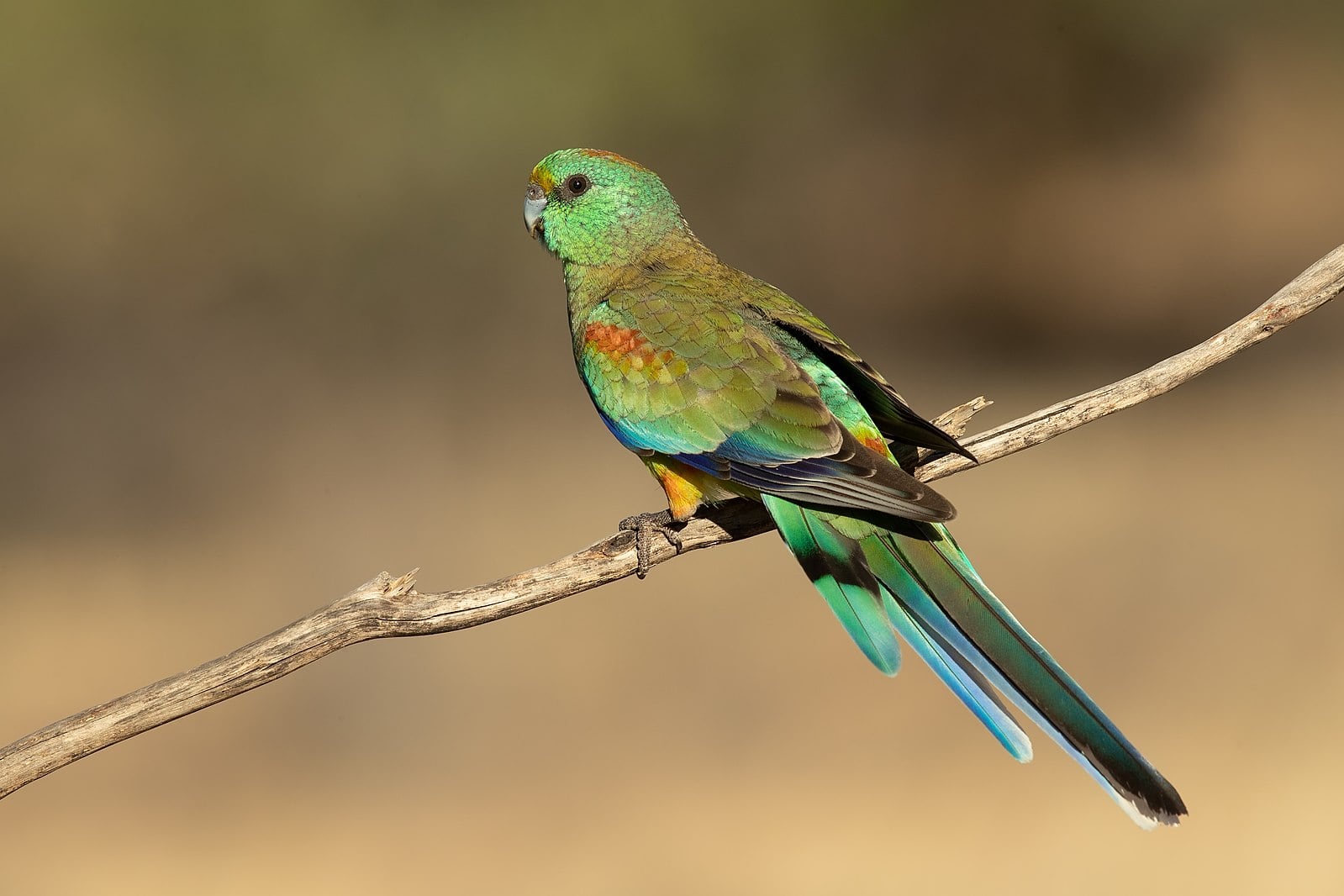This stunning red-capped parrot has the most unfortunate species name

Bec Crew
Bec Crew

EASILY IDENTIFIED by its crimson crown, neon green and yellow cheeks, and slender, elongated bill, the red-capped parrot (Purpureicephalus spurius) also sports a striking purple chest that is an absolute sight to see if you’re lucky enough to spot one of these birds in the wild.
Just like the long-billed black cockatoo (Calyptorhynchus baudinii), an endangered species that has an even smaller range in southwest Western Australia, red-capped parrots are perfectly suited to feed on the seedpods of the marri Eucalypts (Corymbia calophylla), which are native to the region, and are a staple of both species’ diets.
Both birds feed mainly on the ground, using one of their feet to hold the pods like an ice-cream cone while they poke their bills inside to dislodge and retrieve the seeds.
You can see a red-capped parrot in action here – it’s remarkable how dextrous it is as it spins the seed around:
The sole member of its genus, owing to its unique bill shape, the red-capped parrot is thought to be related to the Psephotellus genus of Australian parakeets.
Its closest known relative is the mulga parrot (Psephotellus varius), a species native to southern Australia, known for its jade green and olive colouring:

The red-capped parrot’s species name spurius refers to the fact that, while the males and females look very similar to one another – the females tend to be slightly less vibrant and have green and yellow spots on their red flanks – the juveniles look completely different, almost as if they’re not related at all.
They don’t have a red crown, for one thing.
This confounded researchers early on in the species’ discovery, and so in 1820, German naturalist Heinrich Kuhl gave them the species name, spurius, meaning “illegitimate” in Latin.
The genus name Purpureicephalus, is an amalgam that means “purple or reddish head” in Ancient Greek, which means, yes, the red-capped parrot’s scientific name translates to “red-headed bastard”, as Australian naturalist Ian Fraser and co-author Jeannie Gray point out in their seminal book on bird names.
Unfortunate name aside, this majestic little bird is thriving. Unlike so many of our native species these days, its population actually appears to be increasing.
Here’s a red-capped parrot looking almost impossibly beautiful against the muted colours of the bush:




